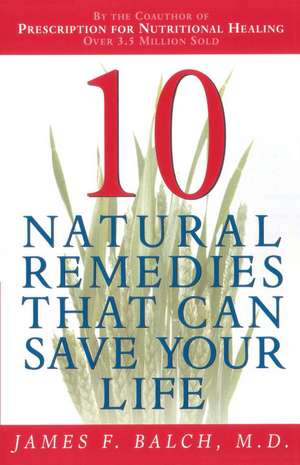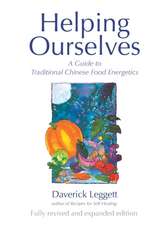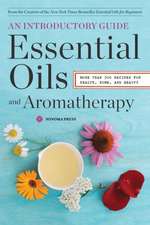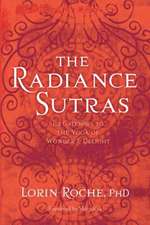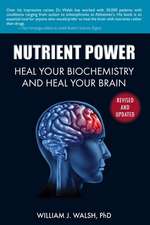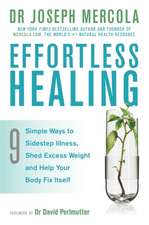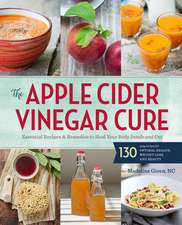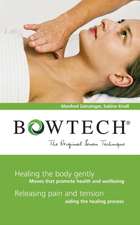Ten Natural Remedies
Autor James F. Balchen Limba Engleză Paperback – 31 iul 1998
In 10 Natural Remedies That Can Save Your Life, Dr. Balch empowers readers to take action to protect their own health. He provides them with a better understanding of the healthy body and suggests natural remedies for medical problems, including:
Barley grass, one of the richest sources of nutrients on earth, which has been shown in laboratory studies to prevent and successfully treat both breast and prostate cancer.
Full-spectrum light and a change of habit, which in some cases can cure depression just as well as a drug.
Dietary supplements. People need adequate levels of vitamins C and E to defend against harmful agents.
The Three G's--garlic, ginseng, and ginkgo--which have well-known beneficial properties. Dr. Balch shows readers how to achieve the best results.
Using plainspoken common sense and anecdotal examples featuring his own patients, Dr. Balch demystifies the language of health, providing important and readily available remedies that can literally save lives.
With plainspoken common sense and examples from the case histories of Dr. Balch's own patients, TEN NATURAL REMEDIES THAT CAN SAVE YOUR LIFE reveals the simple, proven remedies that really can save your life--naturally. -->
Preț: 111.58 lei
Nou
Puncte Express: 167
Preț estimativ în valută:
21.35€ • 22.83$ • 17.80£
21.35€ • 22.83$ • 17.80£
Carte disponibilă
Livrare economică 27 martie-10 aprilie
Preluare comenzi: 021 569.72.76
Specificații
ISBN-13: 9780385493505
ISBN-10: 0385493509
Pagini: 272
Dimensiuni: 146 x 221 x 18 mm
Greutate: 0.34 kg
Ediția:Main Street Boo
Editura: Main Street Books
ISBN-10: 0385493509
Pagini: 272
Dimensiuni: 146 x 221 x 18 mm
Greutate: 0.34 kg
Ediția:Main Street Boo
Editura: Main Street Books
Notă biografică
James F. Balch, M.D., is a graduate of the School of Medicine at Indiana University. He is the coauthor of Prescription for Nutritional Healing: A-to-Z Guide to Supplements, which has sold over 3.5 million copies to date. His other books include Prescription for Dietary Wellness and The Super Antioxidants. In his private practice as a urologist and in his well-respected newsletter, "Prescriptions for Healthy Living," Dr. Balch has always searched for ways to help patients assume responsibility for their own well-being. Dr. Balch lives in Texas.
Extras
Garlic
No one is neutral about garlic, just as no one is neutral about skunks. Some people love the look of a skunk's soft, furry body, its quizzical face, its seemingly gentle demeanor. Others bluntly say that a skunk stinks, and they want nothing to do with it.
And then there's garlic. Some cuisines seem to start with garlic, the other ingredients, like tomatoes, herbs, and shellfish, serving as mere afterthoughts. There are gourmets, bon vivants, and, if truth be told, gluttons who all speak of garlic the way wine connoisseurs speak of their favorite vintage and cheese lovers talk of the subtle distinctions in flavor of one variety over another.
The garlic haters, on the other hand, say it smells terrible. They can't stand the way it comes out on the breath, the way the odor seems to ooze through the pores of the eater. They even joke that garlic is an excellent method of birth control; if one lover eats garlic, the other will maintain a distance of at least ten feet. For some people, garlic is even mildly toxic, upsetting their stomachs.
Garlic and alcohol are substances that are not metabolized. They are absorbed through the stomach lining, which is why they leave the telltale odor. And it's why some people are sick to the stomach after ingesting them.
Fortunately, there is an aged garlic product that is detoxified and thus deodorized. Just as deodorized skunks make great house pets, so the more sociable garlic, with slightly altered chemistry and sold under the name Kyolic, can be used by people who can't eat ordinary garlic. In fact, a number of studies indicate that Kyolic may be more effective than raw garlic when it comes to boosting the body's immune system.
Why is garlic, in its original form or as the extract of the aged vegetable, good for you? Garlic contains germanium and selenium, which are sulfur-containing antioxidants that boost the immune system. In the study mentioned, conducted by Dr. Tariq Abdullah, Kyolic killed 20 percent more of the tumor cells in laboratory cultures than did raw garlic. And raw garlic is by itself one of the most potent boosters of your natural killer cells.
Kyolic has also been found more beneficial for hypoglycemics--people with low blood sugar levels--than raw garlic. The latter lowers the blood sugar level, unfortunately, but Kyolic stabilizes it. The aging process that creates Kyolic produces a supplement whose benefits I find stronger than those of raw garlic.
As enthusiastic as I am about barley grass, if someone were to ask me which single supplement he or she should use, I would recommend Kyolic garlic. It is among the oldest and most versatile of the documented natural remedies. When Hippocrates, the father of diagnostic medicine, was busy noting which treatments worked for the Greek people he treated, he listed garlic. A total of twenty-two ancient Egyptian remedies were found to use garlic, as noted in the Ebers Papyrus dating from the sixteenth century B.C.E. Garlic was a tool against the plague when it struck Marseilles in the 1770s. Albert Schweitzer found that, when he ran out of pharmaceutical supplies in his African mission, garlic successfully stopped dysentery. Louis Pasteur discovered that garlic had antibacterial properties. The Vikings would not go on long sea voyages without garlic. And, of course, as we know from fiction, garlic is an excellent defense against vampires.
Garlic's value for your heart is well known. First, it contains properties for fighting "bad" cholesterol. We know now that high-density lipoprotein (HDL) cholesterol is not dangerous, but low-density lipoprotein (LDL) certainly is, because it can be oxidized by dangerous free radicals. Oxidized LDL is an enemy of the white blood cells, which become enlarged as "foam cells," and ultimately are deposited on the arterial walls in the form of plaque. The lumen, the open space of the artery, becomes more and more narrow until it is completely clogged.
HDL works in a more positive fashion. It is thicker than LDL and acts a little like an older sibling assigned to keep the younger one out of trouble. HDL, in a way, takes the LDL by the scruff of the neck and escorts it to the liver, where it is broken down and removed from the body. LDL behaves itself only if it has not been oxidized. And it is the antioxidant quality of garlic that so diminishes the free radical damage to the cholesterol that LDL doesn't need its sibling HDL to hang around. It can be safely removed by itself. The result is that the garlic reduces the start and the progression of arteriosclerosis.
Heart patients, therefore, are especially blessed by garlic, but it is important to check with your doctor before adding garlic to your regimen, because there are pharmaceuticals that match its chemical properties. This is especially the case with popular blood thinners. In fact, Germany licenses garlic supplements as drugs for the treatment of arteriosclerosis.
In the 1920s, the world was introduced to one of the most valuable yet dangerous drugs ever created. This was aspirin, and 25 percent of all people will, at some point, have a serious, perhaps life-threatening reaction to it. Even more important, some children may develop Reye's syndrome from aspirin because their body chemistry is not sufficiently stable. Yet despite the risks, most emergency medical physicians and heart experts say that at the first sign of heart attack, you should take an aspirin and then call 911, because aspirin thins the blood, and this can delay or prevent a heart attack.
Garlic is natural aspirin, not because it contains salicylic acid, which was first identified in willow bark tea as a substance to ease headaches and reduce joint inflammation, but because it can help to prevent red blood cells from clumping together. Other qualities of garlic, so different from aspirin that they present no risk, dissolve clots and lengthen clotting time. This natural thinning of the blood helps every aspect of blood flow within your body. It is the safest source of prevention of heart attacks and strokes. Keeping that aspirin bottle tucked in with emergency medical supplies is still a good idea, but the regular consumption of Kyolic will almost certainly preclude the need for more drastic measures.
We know that garlic provides a benefit for the cardiovascular system. Perhaps you or someone you know has a little difficulty in walking. It doesn't seem serious, but maybe it's reached the point where you just don't want to walk any more than you have to. You find that your legs feel weak, or you have a certain amount of leg pain. And when you stop walking to pause for a rest or sit down, the discomfort goes away.
That discomfort is caused by poor blood circulation in your legs. The technical term for the problem is intermittent claudication. Since it is known that garlic improves circulation to the body's peripheries, studies were conducted with patients experiencing this problem. The regular use of garlic lengthened the distance they could walk without weakness or discomfort. And as a side benefit, their cholesterol levels were lowered, and their blood pressure dropped to a healthy level.
This is what happens when garlic becomes part of the diet and supplement program of those with heart problems. In these cases, we know that individuals who, by all rights of family history, should be experiencing problems with their hearts are not having problems. They are doing better than their ancestors. In longer-term studies, they have outlived everyone simply by adding garlic in one form or another.
Are these individuals genetically unique? Possibly, but it is doubtful. Instead, it is safe to assume that the garlic made the difference. Yet this is not scientific methodology. It is just common sense, which, when it comes to the use of garlic to counter genetics, makes for good medicine.
Where scientific methods can be applied, as with antibacterial factors, garlic has been repeatedly proven safe and effective. Probably every woman and most men have heard of "yeast infection" (a.k.a. yeast syndrome or chronic candidiasis), a term defined mostly through symptoms. Blood tests or stool cultures can reveal the infection. But usually it is determined through a careful, complete physical history that reveals such problems as depression, irritability, vaginal yeast infections, frequent bladder infections, chronic fatigue, lack of energy, reduced sex drive, inability to concentrate, and other distresses. Any one of these is a concern; several in combination generally indicate the presence of chronic candidiasis.
Because yeast infections, along with fungus problems and viral infections, are not usually life-threatening, double-blind studies have been carried out on garlic as a treatment. The findings from these studies have repeatedly shown the value of garlic, in some cases used alone, and in others administered in combination with other natural therapeutics.
Note: Be certain not to self-medicate with garlic in response to the problems mentioned above. With candidiasis, for example, there may be several other concerns. You must eliminate from your diet alcohol, high-sugar foods, and other substances with a high-yeast or mold content. Your digestion must be improved. Detoxification of the liver must be pursued and the immune system strengthened. Then you must coordinate your efforts with your doctor's for continued treatment, because yeast infections can lie dormant and suddenly return if you fail to continue your care after the immediate flare-up.
Garlic is also excellent in the handling of body fat. This does not mean that you can eat garlic instead of getting exercise. You might be able to scare a vampire, but sloth, indolence, and overindulgence have no fear of garlic. Garlic, however, is acknowledged as one of the most effective means of reducing fat in conjunction with a healthy diet and exercise program.
This is not to say that you can eat all you want, using garlic as a magic pill. What you eat and how much you eat determine one source of fat, perhaps the most controllable source of fat in your body. The younger you are, the easier it is to burn the fat you take in through diet. As you get older, the ability to burn fat decreases. You may be as active at forty as you were at twenty, but you will find that a diet that left you with a flat stomach and slim hips in your youth is now forcing you to go to a larger size of clothing. This is natural and not unhealthy, but excess fat is never a good situation.
Note: Recent reports of long-term studies on body weight and health show that excess weight alone is not the danger it was once believed to be. The more excess fat you carry, the greater the stress on your body, but repeated dieting causes even greater stress. An important factor is your volume of exercise. An overweight person whose weight is stable, who is physically active, and who eats a healthy diet, including the appropriate supplements, will be far better off than the "hard body" whose diet and exercise habits are wrong. To be fat is not necessarily to be unhealthy. It is simply the most visible sign of a potentially dangerous condition that may manifest itself if you do not respect all the other factors that insure good health.
The fat we scold for clinging to our bodies as we age comes from two sources. One fat stays there because our bodies fail to break it down and eliminate it. The other fat is made by our bodies, a process known as endogenous lipogenesis. Both may be products of our lifestyle as much as our age and eating habits.
For example, do you drink? I don't mean to excess. I mean a beer after work or some wine with dinner. Nothing to worry about. Nothing excessive.
What you probably don't realize is that the alcohol you consume interferes with the breakdown of dietary fats and stimulates endogenous lipogenesis. In other words, alcohol triggers the body's fat-producing mechanism and inhibits the body's ability to break down and eliminate fat.
Taking garlic is not an excuse to drink. I don't want to see you spending your happy hour sipping margaritas and downing quantities of Kyolic. However, garlic does slow or stop our body's production of fat by breaking down the lipids and enhancing the elimination of various by-products. Garlic also moves lipids from tissue to the bloodstream for eventual removal. Garlic can dramatically reduce the bad consequences of a multitude of dietary "sins." It truly is a good thing.
Perhaps one of the most promising findings of research on the use of garlic has come in the field of cancer. The Memorial Sloan-Kettering Cancer Center in New York has found that garlic inhibits the growth of cancer cells in the laboratory. And in a study of colon cancer conducted at the M. D. Anderson Hospital in Houston, Dr. Michael Wargovich determined that diallyl sulfide, a major component of garlic, reduced the growth of colon cancer in mice. A related experiment showed that diallyl sulfide may prevent cancer of the esophagus and help in preventing prostate cancer in some individuals.
The experiments have been thorough and the results encouraging. Garlic is gradually proving to be an effective treatment for cancer as well as a preventive, and is now being tried, in conjunction with other treatments, on immune-system disorders like AIDS. Laboratory results are consistently positive, and trials on humans show similar findings, though they are not yet far enough along for garlic to be stipulated as a treatment. However, as I said at the start of this chapter, if I had to take just one supplement for my health, it would be Kyolic garlic.
No one is neutral about garlic, just as no one is neutral about skunks. Some people love the look of a skunk's soft, furry body, its quizzical face, its seemingly gentle demeanor. Others bluntly say that a skunk stinks, and they want nothing to do with it.
And then there's garlic. Some cuisines seem to start with garlic, the other ingredients, like tomatoes, herbs, and shellfish, serving as mere afterthoughts. There are gourmets, bon vivants, and, if truth be told, gluttons who all speak of garlic the way wine connoisseurs speak of their favorite vintage and cheese lovers talk of the subtle distinctions in flavor of one variety over another.
The garlic haters, on the other hand, say it smells terrible. They can't stand the way it comes out on the breath, the way the odor seems to ooze through the pores of the eater. They even joke that garlic is an excellent method of birth control; if one lover eats garlic, the other will maintain a distance of at least ten feet. For some people, garlic is even mildly toxic, upsetting their stomachs.
Garlic and alcohol are substances that are not metabolized. They are absorbed through the stomach lining, which is why they leave the telltale odor. And it's why some people are sick to the stomach after ingesting them.
Fortunately, there is an aged garlic product that is detoxified and thus deodorized. Just as deodorized skunks make great house pets, so the more sociable garlic, with slightly altered chemistry and sold under the name Kyolic, can be used by people who can't eat ordinary garlic. In fact, a number of studies indicate that Kyolic may be more effective than raw garlic when it comes to boosting the body's immune system.
Why is garlic, in its original form or as the extract of the aged vegetable, good for you? Garlic contains germanium and selenium, which are sulfur-containing antioxidants that boost the immune system. In the study mentioned, conducted by Dr. Tariq Abdullah, Kyolic killed 20 percent more of the tumor cells in laboratory cultures than did raw garlic. And raw garlic is by itself one of the most potent boosters of your natural killer cells.
Kyolic has also been found more beneficial for hypoglycemics--people with low blood sugar levels--than raw garlic. The latter lowers the blood sugar level, unfortunately, but Kyolic stabilizes it. The aging process that creates Kyolic produces a supplement whose benefits I find stronger than those of raw garlic.
As enthusiastic as I am about barley grass, if someone were to ask me which single supplement he or she should use, I would recommend Kyolic garlic. It is among the oldest and most versatile of the documented natural remedies. When Hippocrates, the father of diagnostic medicine, was busy noting which treatments worked for the Greek people he treated, he listed garlic. A total of twenty-two ancient Egyptian remedies were found to use garlic, as noted in the Ebers Papyrus dating from the sixteenth century B.C.E. Garlic was a tool against the plague when it struck Marseilles in the 1770s. Albert Schweitzer found that, when he ran out of pharmaceutical supplies in his African mission, garlic successfully stopped dysentery. Louis Pasteur discovered that garlic had antibacterial properties. The Vikings would not go on long sea voyages without garlic. And, of course, as we know from fiction, garlic is an excellent defense against vampires.
Garlic's value for your heart is well known. First, it contains properties for fighting "bad" cholesterol. We know now that high-density lipoprotein (HDL) cholesterol is not dangerous, but low-density lipoprotein (LDL) certainly is, because it can be oxidized by dangerous free radicals. Oxidized LDL is an enemy of the white blood cells, which become enlarged as "foam cells," and ultimately are deposited on the arterial walls in the form of plaque. The lumen, the open space of the artery, becomes more and more narrow until it is completely clogged.
HDL works in a more positive fashion. It is thicker than LDL and acts a little like an older sibling assigned to keep the younger one out of trouble. HDL, in a way, takes the LDL by the scruff of the neck and escorts it to the liver, where it is broken down and removed from the body. LDL behaves itself only if it has not been oxidized. And it is the antioxidant quality of garlic that so diminishes the free radical damage to the cholesterol that LDL doesn't need its sibling HDL to hang around. It can be safely removed by itself. The result is that the garlic reduces the start and the progression of arteriosclerosis.
Heart patients, therefore, are especially blessed by garlic, but it is important to check with your doctor before adding garlic to your regimen, because there are pharmaceuticals that match its chemical properties. This is especially the case with popular blood thinners. In fact, Germany licenses garlic supplements as drugs for the treatment of arteriosclerosis.
In the 1920s, the world was introduced to one of the most valuable yet dangerous drugs ever created. This was aspirin, and 25 percent of all people will, at some point, have a serious, perhaps life-threatening reaction to it. Even more important, some children may develop Reye's syndrome from aspirin because their body chemistry is not sufficiently stable. Yet despite the risks, most emergency medical physicians and heart experts say that at the first sign of heart attack, you should take an aspirin and then call 911, because aspirin thins the blood, and this can delay or prevent a heart attack.
Garlic is natural aspirin, not because it contains salicylic acid, which was first identified in willow bark tea as a substance to ease headaches and reduce joint inflammation, but because it can help to prevent red blood cells from clumping together. Other qualities of garlic, so different from aspirin that they present no risk, dissolve clots and lengthen clotting time. This natural thinning of the blood helps every aspect of blood flow within your body. It is the safest source of prevention of heart attacks and strokes. Keeping that aspirin bottle tucked in with emergency medical supplies is still a good idea, but the regular consumption of Kyolic will almost certainly preclude the need for more drastic measures.
We know that garlic provides a benefit for the cardiovascular system. Perhaps you or someone you know has a little difficulty in walking. It doesn't seem serious, but maybe it's reached the point where you just don't want to walk any more than you have to. You find that your legs feel weak, or you have a certain amount of leg pain. And when you stop walking to pause for a rest or sit down, the discomfort goes away.
That discomfort is caused by poor blood circulation in your legs. The technical term for the problem is intermittent claudication. Since it is known that garlic improves circulation to the body's peripheries, studies were conducted with patients experiencing this problem. The regular use of garlic lengthened the distance they could walk without weakness or discomfort. And as a side benefit, their cholesterol levels were lowered, and their blood pressure dropped to a healthy level.
This is what happens when garlic becomes part of the diet and supplement program of those with heart problems. In these cases, we know that individuals who, by all rights of family history, should be experiencing problems with their hearts are not having problems. They are doing better than their ancestors. In longer-term studies, they have outlived everyone simply by adding garlic in one form or another.
Are these individuals genetically unique? Possibly, but it is doubtful. Instead, it is safe to assume that the garlic made the difference. Yet this is not scientific methodology. It is just common sense, which, when it comes to the use of garlic to counter genetics, makes for good medicine.
Where scientific methods can be applied, as with antibacterial factors, garlic has been repeatedly proven safe and effective. Probably every woman and most men have heard of "yeast infection" (a.k.a. yeast syndrome or chronic candidiasis), a term defined mostly through symptoms. Blood tests or stool cultures can reveal the infection. But usually it is determined through a careful, complete physical history that reveals such problems as depression, irritability, vaginal yeast infections, frequent bladder infections, chronic fatigue, lack of energy, reduced sex drive, inability to concentrate, and other distresses. Any one of these is a concern; several in combination generally indicate the presence of chronic candidiasis.
Because yeast infections, along with fungus problems and viral infections, are not usually life-threatening, double-blind studies have been carried out on garlic as a treatment. The findings from these studies have repeatedly shown the value of garlic, in some cases used alone, and in others administered in combination with other natural therapeutics.
Note: Be certain not to self-medicate with garlic in response to the problems mentioned above. With candidiasis, for example, there may be several other concerns. You must eliminate from your diet alcohol, high-sugar foods, and other substances with a high-yeast or mold content. Your digestion must be improved. Detoxification of the liver must be pursued and the immune system strengthened. Then you must coordinate your efforts with your doctor's for continued treatment, because yeast infections can lie dormant and suddenly return if you fail to continue your care after the immediate flare-up.
Garlic is also excellent in the handling of body fat. This does not mean that you can eat garlic instead of getting exercise. You might be able to scare a vampire, but sloth, indolence, and overindulgence have no fear of garlic. Garlic, however, is acknowledged as one of the most effective means of reducing fat in conjunction with a healthy diet and exercise program.
This is not to say that you can eat all you want, using garlic as a magic pill. What you eat and how much you eat determine one source of fat, perhaps the most controllable source of fat in your body. The younger you are, the easier it is to burn the fat you take in through diet. As you get older, the ability to burn fat decreases. You may be as active at forty as you were at twenty, but you will find that a diet that left you with a flat stomach and slim hips in your youth is now forcing you to go to a larger size of clothing. This is natural and not unhealthy, but excess fat is never a good situation.
Note: Recent reports of long-term studies on body weight and health show that excess weight alone is not the danger it was once believed to be. The more excess fat you carry, the greater the stress on your body, but repeated dieting causes even greater stress. An important factor is your volume of exercise. An overweight person whose weight is stable, who is physically active, and who eats a healthy diet, including the appropriate supplements, will be far better off than the "hard body" whose diet and exercise habits are wrong. To be fat is not necessarily to be unhealthy. It is simply the most visible sign of a potentially dangerous condition that may manifest itself if you do not respect all the other factors that insure good health.
The fat we scold for clinging to our bodies as we age comes from two sources. One fat stays there because our bodies fail to break it down and eliminate it. The other fat is made by our bodies, a process known as endogenous lipogenesis. Both may be products of our lifestyle as much as our age and eating habits.
For example, do you drink? I don't mean to excess. I mean a beer after work or some wine with dinner. Nothing to worry about. Nothing excessive.
What you probably don't realize is that the alcohol you consume interferes with the breakdown of dietary fats and stimulates endogenous lipogenesis. In other words, alcohol triggers the body's fat-producing mechanism and inhibits the body's ability to break down and eliminate fat.
Taking garlic is not an excuse to drink. I don't want to see you spending your happy hour sipping margaritas and downing quantities of Kyolic. However, garlic does slow or stop our body's production of fat by breaking down the lipids and enhancing the elimination of various by-products. Garlic also moves lipids from tissue to the bloodstream for eventual removal. Garlic can dramatically reduce the bad consequences of a multitude of dietary "sins." It truly is a good thing.
Perhaps one of the most promising findings of research on the use of garlic has come in the field of cancer. The Memorial Sloan-Kettering Cancer Center in New York has found that garlic inhibits the growth of cancer cells in the laboratory. And in a study of colon cancer conducted at the M. D. Anderson Hospital in Houston, Dr. Michael Wargovich determined that diallyl sulfide, a major component of garlic, reduced the growth of colon cancer in mice. A related experiment showed that diallyl sulfide may prevent cancer of the esophagus and help in preventing prostate cancer in some individuals.
The experiments have been thorough and the results encouraging. Garlic is gradually proving to be an effective treatment for cancer as well as a preventive, and is now being tried, in conjunction with other treatments, on immune-system disorders like AIDS. Laboratory results are consistently positive, and trials on humans show similar findings, though they are not yet far enough along for garlic to be stipulated as a treatment. However, as I said at the start of this chapter, if I had to take just one supplement for my health, it would be Kyolic garlic.
Descriere
Balch empowers readers to take control of their health as he explains how the healthy mind and body function and suggests natural remedies for serious medical problems. A 25-point exam isolates the biological and environmental stresses in everyday life.
